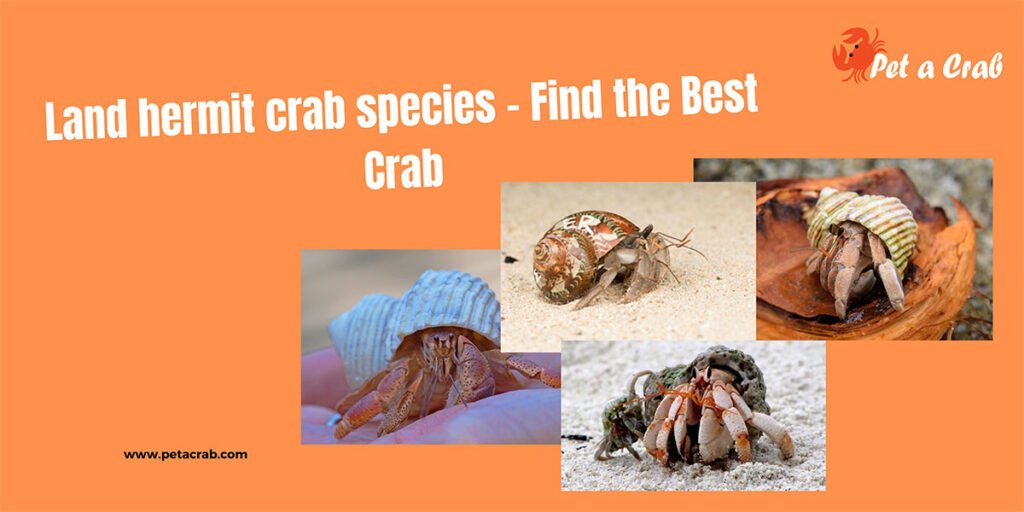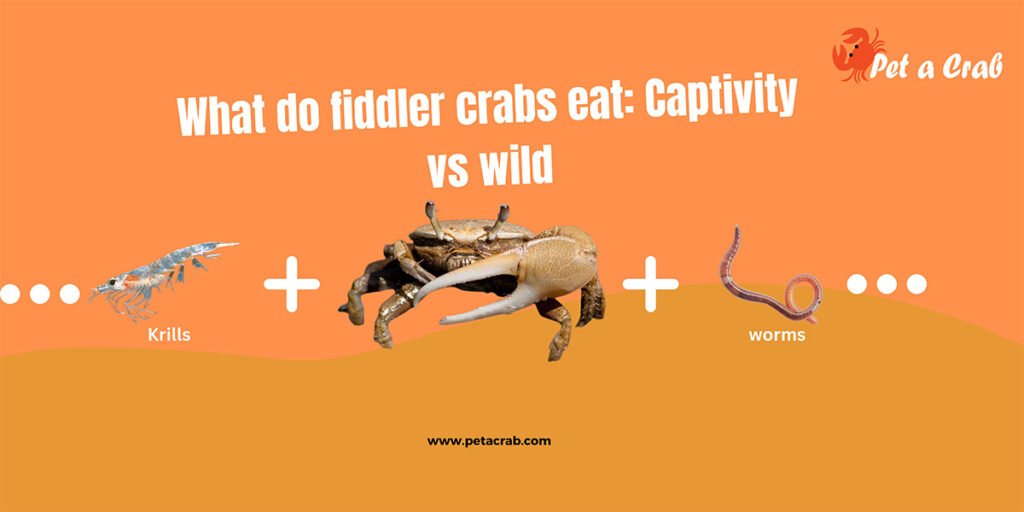Staghorn hermit crab (Manucomplanus varians) is a unique and fascinating creature, but they’re best suited for experienced aquarists. Their specific care requirements make them a bit challenging for beginners, but if you’re up for it, they’re well worth the effort! They’re known for their unusual symbiotic relationship with corals, where they carry a live coral colony on their shells for both protection and camouflage.
Here you’ll learn everything about staghorn hermit crab and its needs, from tank setup to diet. Let’s deep dive into it.
A quick overview of staghorn hermit crab
- Common names: Staghorn hermit crab, staghorn crab, antler crab, coralhouse hermit crab
- Scientific name: Manucomplanus varians
- Care lavel: Medium
- Color: Orange
- Max size: 2 inces
- Temperature: 72-78°F
- Temperament: Peaceful
- Reef safe: Yes
- Habitat type: Saltwater aquarium
- Sleeping nature: Nocturnal
- Diet: Herbivore/Omnivore
Habitat and distribution
Staghorn hermit crabs typically live in the Indo-Pacific reef areas. You’ll often find them near sandy regions around reefs, where they can easily burrow and hide. These crabs feel right at home in habitats mixing sand and rock, which offer plenty of hiding spots and food sources. In the wild, they’ve been spotted in waters from 6 to 183 meters (20 to 600 feet) deep, stretching across regions from the central Gulf of California down to Panama.

About their unusual shell
Staghorn hermit crabs (Manucomplanus varians) are unlike other hermit crabs because they make their home in a special coral called Janaria mirabilis, rather than using traditional shells. This coral, also known as staghorn hydrocoral, grows over the crab’s shell, eventually forming branching, antler-like structures that give it a distinct appearance. This unique setup creates a fascinating symbiotic relationship where the hydrocoral protects the crab with its stinging cells, while the crab provides the coral with movement, which helps it capture food particles.
Staghorn hermit crab in reef tank
Caring for a staghorn hermit crab in captivity means paying attention to its unusual “shell.” Since Janaria is a calcifying hydrocoral, it requires stable water conditions, including proper calcium levels, a consistent pH, and low nitrates. This coral thrives in moderate to high flow areas where fine food particles remain suspended, making it easier for the coral to filter feed. While Janaria needs some light, avoid intense lighting, which can stress it.
Maintaining Janaria in a tank can be tricky, and a special setup is often best. A separate tank or a refugium with a deep sand bed is ideal for housing this sensitive coral without impacting other tank residents. If the crab’s coral “shell” falls over, it may struggle to turn itself upright due to the weight of the branches, so keep an eye on it and offer a helping hand if needed. With a little extra care, staghorn hermit crabs make captivating additions to reef tanks, blending an unusual look with a one-of-a-kind relationship that brings an oceanic ecosystem to life.

One interesting fact about staghorn hermit crabs is how they adapt when either the crab or coral dies. If the shell dies, the crab keeps going just fine, though it may need to find a new coral host eventually. And if the crab dies, the coral often keeps growing, although its growth pattern may change without its hermit crab partner. This unique relationship makes them fascinating to watch.
Can they live in regular shells? Yes they can; many aquarists reported that they switched from Janaria to regular shells, likely because janaria was small or uncomfortable. If you want your staghorn crab to stick to its coral shell, remove any extra snail shells; these crabs sometimes switch shells if other options become available, especially as they grow.
Keeping coral healthy on these shells is key, so good lighting is essential. I’ve found that a biotope or refugium setup with filter-feeding invertebrates works best since it allows you to feed live or prepared plankton, supporting the coral and the crab. Avoid copper-based medications, as they’re harmful to invertebrates like this crab.
Wondering if staghorn hermit crabs are reef-safe?
They’re generally safe with other reef inhabitants, although you’ll want to keep an eye out for larger, more aggressive crabs that might disturb them. With these tips, you can enjoy a thriving reef environment with your unique staghorn hermit crab as a focal point!
Staghorn hermit crab care
Tank setup
Size
Take a 25-30 gallon tank at least; usually people keep them as a tank cleaner and ornamental inverts. So there will be fish, invertebrates and corals with full of life; that’s why you need to choose a bigger tank. If you want to keep them in specialized tank with two of them (male and female) with Janaria, you can go for a 20 gallon tank.
Substrate
Choose a good sand substrate and mix it with small gravels and stones.
Decoration
Place some hiding places in the tank; you can choose some aquarium stones to do that; just use your creativity. Keep coral anemones as you like; consider keeping 2-3 Janaria as options for the crab, although they’ll craft it with their claws to fit themselves as they grow. Place other equipment like a thermometer and filter as usual.

Water condition
For a Staghorn hermit crab to thrive, maintaining stable water conditions makes a real difference. I aim to keep the temperature between 72-78°F (around 25°C), which gives these crabs a comfortable, consistent environment. Water flow at a medium level works best to mimic their natural habitat, letting them get the right balance of oxygen and movement.
Balanced water parameters are also crucial, especially for sensitive invertebrates like these crabs. I keep dKH around 8-12 and ensure pH levels sit between 8.1 and 8.4. Specific gravity, or salinity, should be around 1.023-1.025 to keep their coral-covered shells and tank conditions in top shape. Making these small adjustments keeps my Staghorn hermit crab happy and healthy, contributing to a thriving aquarium ecosystem.
Note: Keep them with peaceful tank mates.
Diet for staghon hermit crab
Staghorn hermit crabs (Manucomplanus varians) bring a big advantage to tanks by helping control algae and keeping everything clean. These crabs are natural filter feeders, herbivores, and plankton eaters, so they love munching on algae, bacteria, and debris. They keep tanks tidy by eating cyanobacteria, filamentous algae, and fish waste, and they even nibble on detritus from live rock and substrate. When algae levels dip, adding a bit of dried seaweed keeps them satisfied and well-fed.
Though staghorn hermits mainly graze on algae, they enjoy meaty treats now and then, like shrimp, clams, or mussels, making them omnivorous in their diet. I feed mine once or twice a week, depending on how much food is naturally available in the tank. Their coral-covered shell, known as the hydroid, also needs some attention—it thrives on microplankton, so including invertebrate foods ensures both the crab and its live shell stay healthy.
To support their dietary needs, consider adding trace elements like calcium, magnesium, and strontium to the tank, which help them maintain strong shells and good health. A well-fed staghorn hermit crab brings balance to the aquarium ecosystem, working as a natural cleaner while adding character and charm.
Related article: Learn interesting facts about thin strip hermit crab.


